Lumbar Fusion Surgery in Pune
Lumbar fusion is quiet a common procedure done in patients who have degenerative disc disease with instability. Decompression may relieve the pressure over the nerve roots and hence backache and radiculopathy, but in some circumstances fusion is required. The most common cause for fusion is spondylolisthesis, in which there is an abnormal slippage of one vertebrae slip over the other.
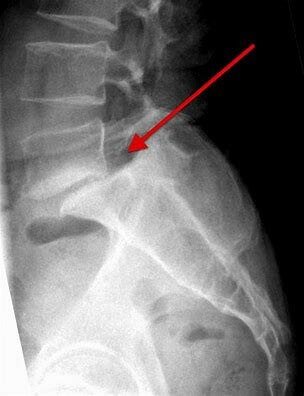

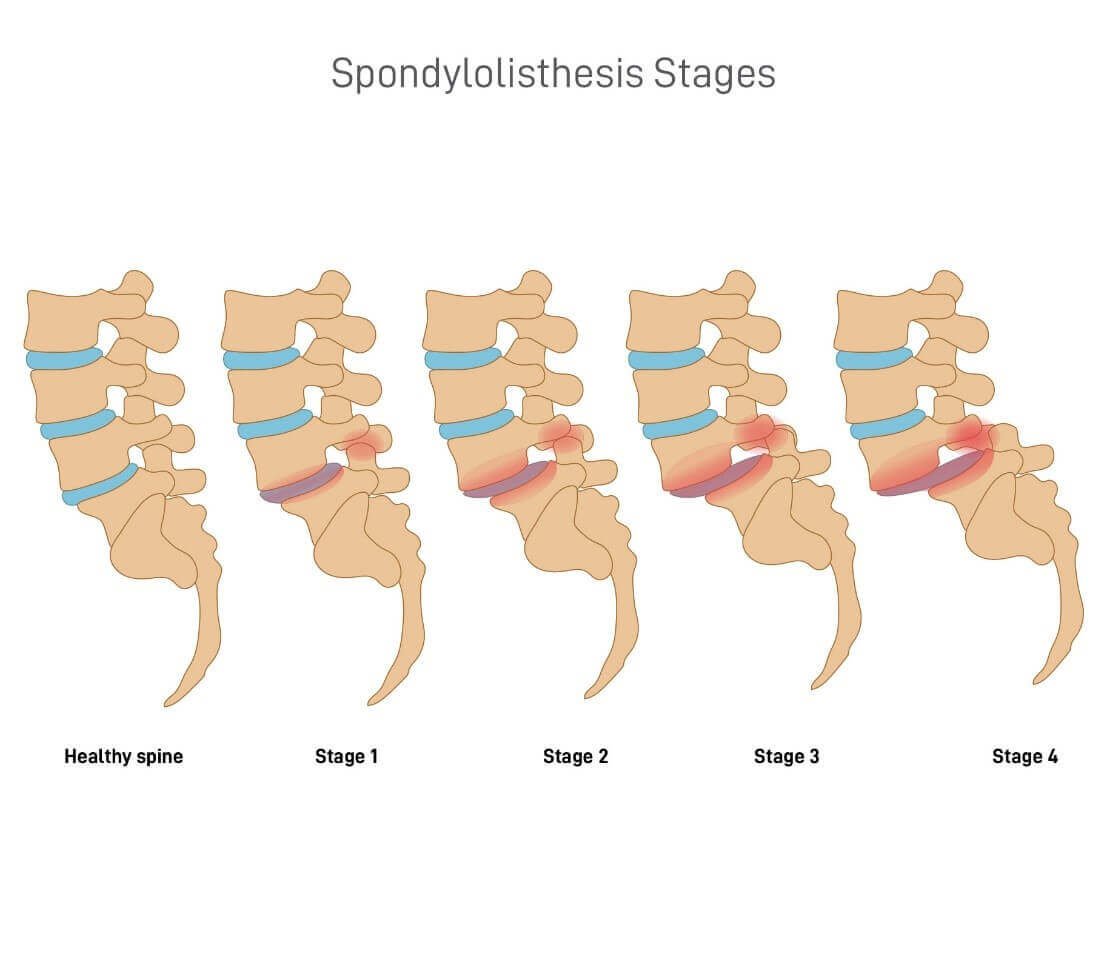
Initially, conservative management with or without anti-inflammatory medication is the treatment prescribed. Few patients may try chiropractors or acupuncture. If the symptoms are persistant and pain is intractable, then advance imaging like MRI is adviced, to see the severity of disease. If the MRI shows a nerve compression or an abnormal slippage of vertebrae, then in such cases surgical option is considered. Usually, surgical option is only considered when the conservative treatment fails.
Lumbar fusion is always done in patients in which the abnormal slippage is identified or in patients, in which the amount of decompression done may result into destabilization of the spine. It is also quiet commonly done in patients who have undergone previously failed decompression surgeries (failed back syndrome).
Performed in two ways: a). Open procedures
b). minimally invasive Surgery (MIS)
Open Procedure: TLIF

After decompression, TLIF cage introduced into the disc space

Skin incision to expose the concerned vertebrae is given using C-ARM. The muscles are retracted and lamina is reached and exposed. Decompression with removal of facet joints done. Disc removed and the upper and lower margins freshened. The TLIF cage is introduced along with the bone chips, and pedicle screw fixation is done. Side effects includes, large incision scar, extensive muscle dissection, long operative time, significant blood loss and para-spinal muscle denervation.
Minimally Invasive Surgery:
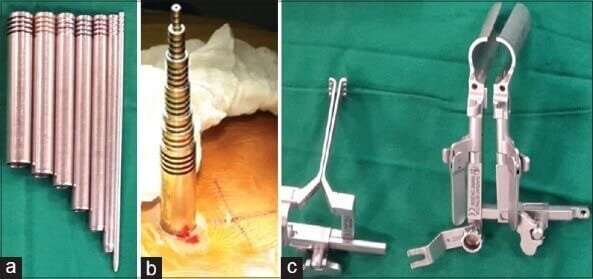

Serially the muscle fibers are spread using dilators to reach the bone. Later, the lamina and joints are decompressed using the minimally invasive approach. In fusion, the dialators are expanded at the bottom to visualize the entire disc space. The disc is removed and the cage is implanted at the disc space and the screws are introduced percutaneously and connected through a rod.
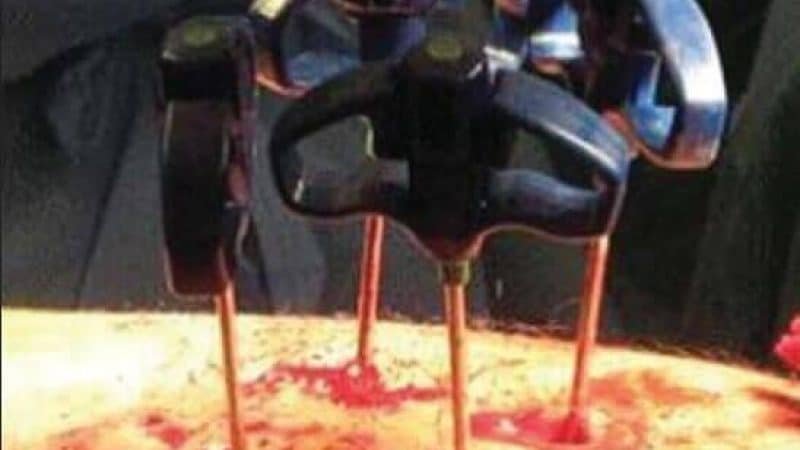
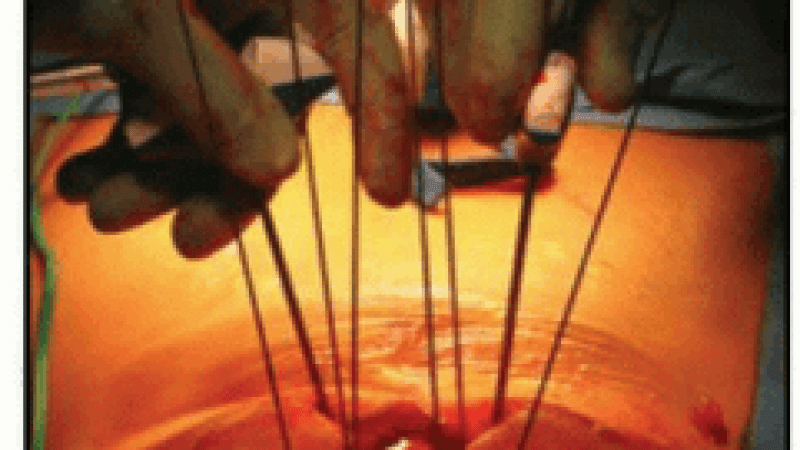
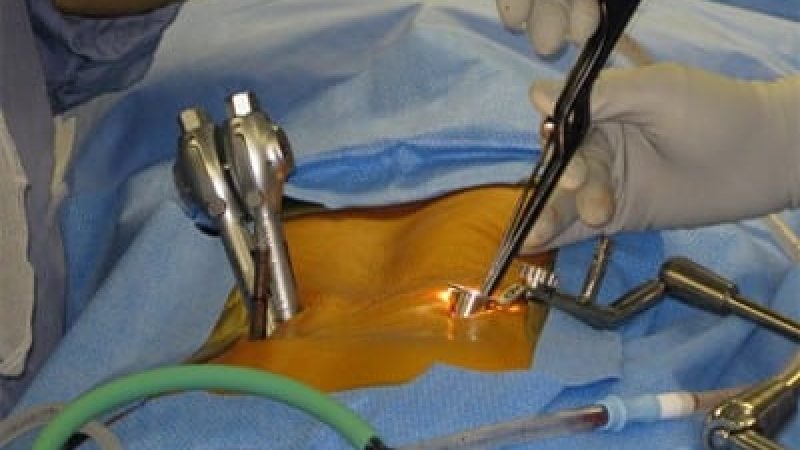
Patients return to home after few days of surgery. They might have to attend the rehabilitation for few days and even have to wear a lumbar brace for 3 months. Such procedures can be performed through two small incisions about 2-3 cms long.